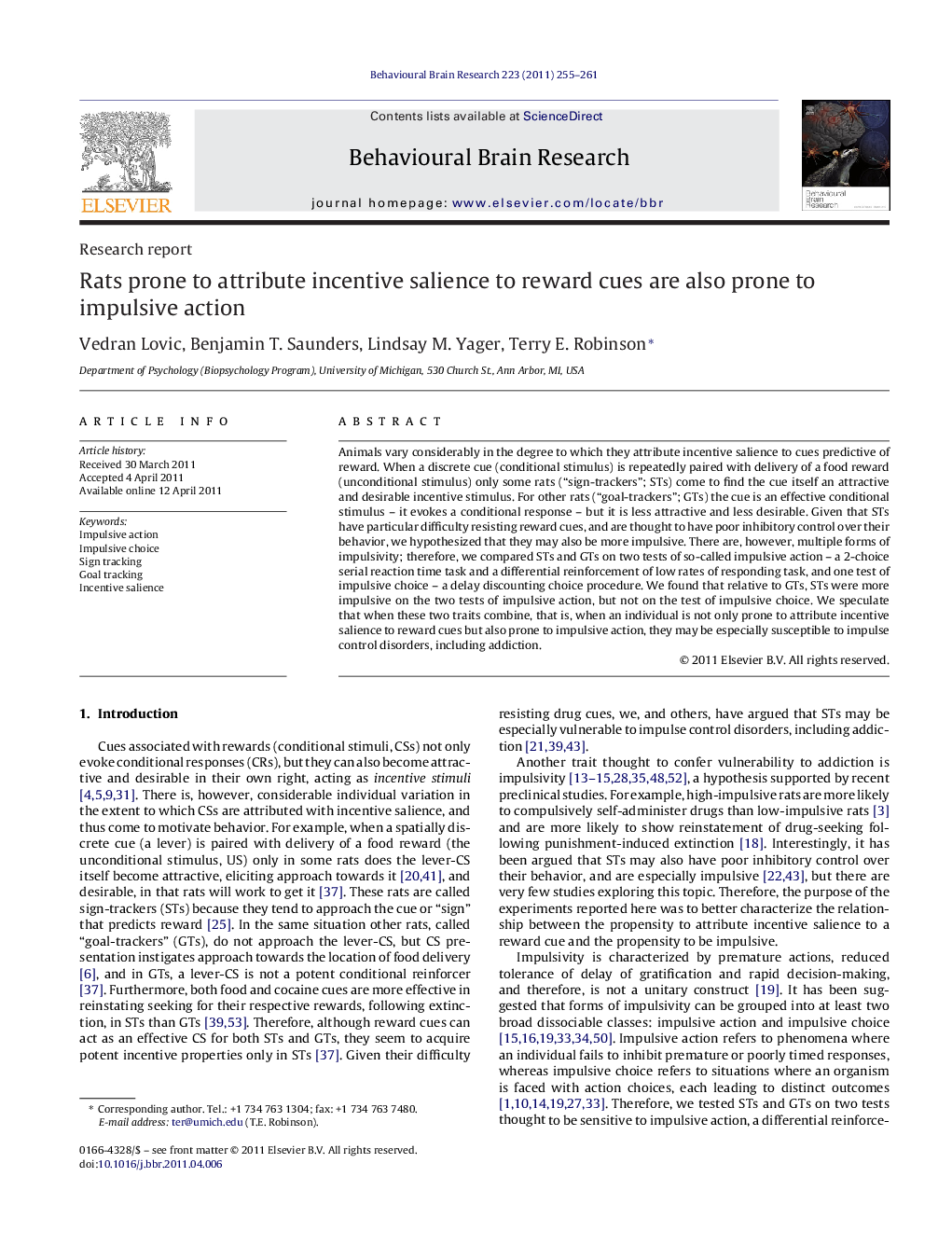| کد مقاله | کد نشریه | سال انتشار | مقاله انگلیسی | نسخه تمام متن |
|---|---|---|---|---|
| 4313256 | 1289992 | 2011 | 7 صفحه PDF | دانلود رایگان |

Animals vary considerably in the degree to which they attribute incentive salience to cues predictive of reward. When a discrete cue (conditional stimulus) is repeatedly paired with delivery of a food reward (unconditional stimulus) only some rats (“sign-trackers”; STs) come to find the cue itself an attractive and desirable incentive stimulus. For other rats (“goal-trackers”; GTs) the cue is an effective conditional stimulus – it evokes a conditional response – but it is less attractive and less desirable. Given that STs have particular difficulty resisting reward cues, and are thought to have poor inhibitory control over their behavior, we hypothesized that they may also be more impulsive. There are, however, multiple forms of impulsivity; therefore, we compared STs and GTs on two tests of so-called impulsive action – a 2-choice serial reaction time task and a differential reinforcement of low rates of responding task, and one test of impulsive choice – a delay discounting choice procedure. We found that relative to GTs, STs were more impulsive on the two tests of impulsive action, but not on the test of impulsive choice. We speculate that when these two traits combine, that is, when an individual is not only prone to attribute incentive salience to reward cues but also prone to impulsive action, they may be especially susceptible to impulse control disorders, including addiction.
► We examine the relationship between two ‘traits’ linked to addiction.
► We find that rats prone to attribute incentive salience to reward cues are also prone to impulsive action.
► We propose that individuals scoring high on both traits will be most susceptible to addiction.
Journal: Behavioural Brain Research - Volume 223, Issue 2, 1 October 2011, Pages 255–261